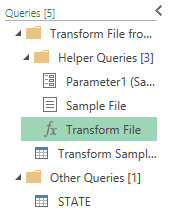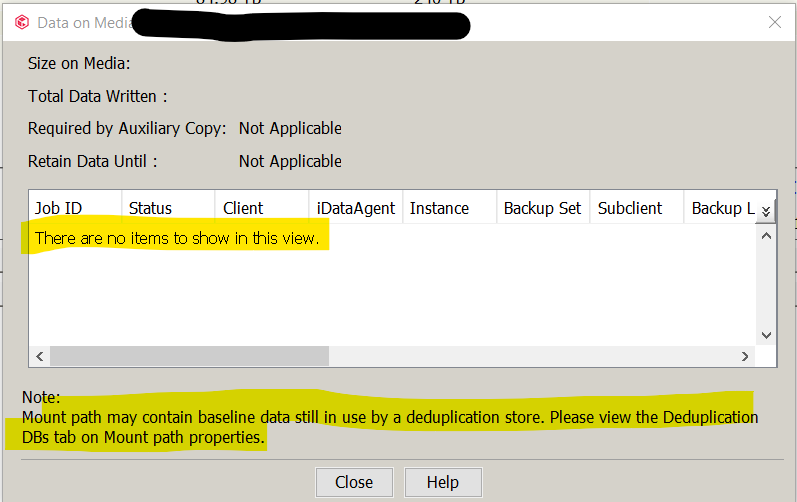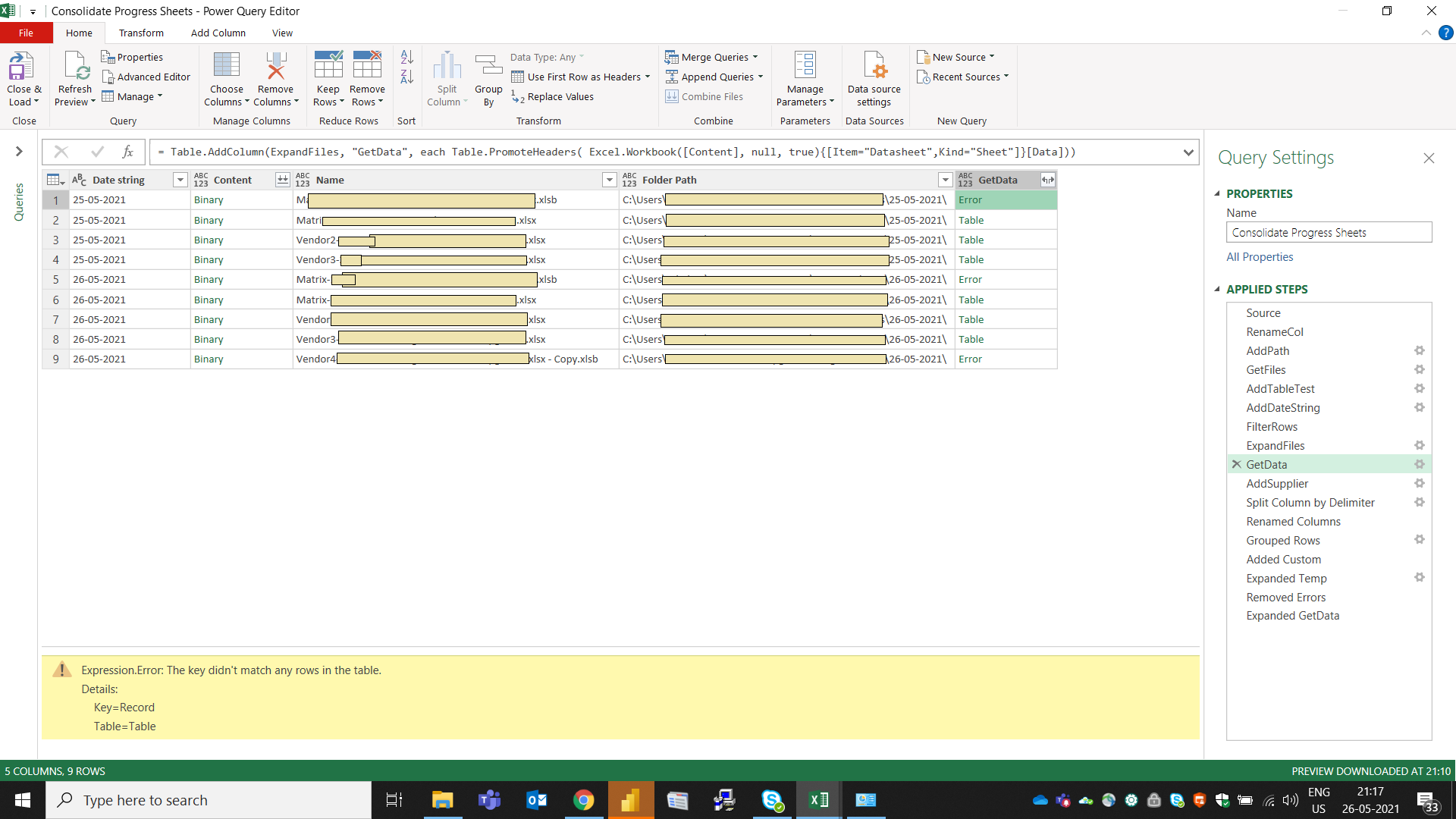The Key Didn’T Match Any Rows In The Table
In the world of databases, queries play a crucial role in extracting information from tables. However, at times, one may encounter error messages that can be quite frustrating to deal with. One such error message is “The key didn’t match any rows in the table.” This article aims to provide a comprehensive understanding of this error message, its common causes, troubleshooting methods, and best practices for error prevention.
Common Error Messages
1. The key didn’t match any rows in the table.
2. Column of the table wasn’t found.
3. Expression error: The name Excel workbook wasn’t recognized. Make sure it’s spelled correctly.
The Importance of the Key
In database management systems, keys are used to uniquely identify records in a table. They serve as a link between different tables, establishing relationships and ensuring data consistency. When a key value specified in a query does not match any existing records in the table, the error message “The key didn’t match any rows in the table” is displayed. This error indicates that the query cannot find a match based on the specified key, resulting in no data being retrieved.
Potential Causes of the Error
1. Incorrect key value: One of the primary causes of this error is using an incorrect or non-existing key value in the query. It is important to ensure that the key value specified in the query matches an existing record in the table.
2. Data inconsistency: If the data in the table has been modified or deleted, it may result in the key not matching any rows. This can occur due to a variety of reasons, such as manual data entry errors, data corruption, or incorrect updates.
3. Missing or incorrect column: The error message “Column of the table wasn’t found” indicates that the column specified in the query does not exist in the table. This can be due to a typo in the query or if the column has been removed or renamed.
4. Syntax errors: The error message “Expression error: The name Excel workbook wasn’t recognized. Make sure it’s spelled correctly” suggests that there is a syntax error in the query, specifically related to referencing an Excel workbook. Double-checking the spelling and syntax of the query can help resolve this issue.
Troubleshooting the Issue
1. Verify key value: Review the query and ensure that the key value specified is correct and corresponds to an existing record in the table. If necessary, refer to the table’s documentation or consult with the database administrator to confirm the key value.
2. Check data consistency: If the error persists, inspect the table for any inconsistencies or modifications that may have caused the key value to not match any rows. Restore or update the data if required to ensure that the key values align with the table’s contents.
3. Validate column name: If the error message indicates that the column of the table wasn’t found, double-check the spelling and syntax of the column name in the query. Ensure that the column exists in the table and has not been removed or renamed.
4. Review query syntax: In case of an expression error related to an Excel workbook, carefully analyze the query syntax and verify the spelling of the workbook name. Make any necessary corrections or adjustments to rectify the syntax error.
Fixing the Error
1. Correct the key value: If the error is due to an incorrect key value, modify the query to use the correct key value that matches an existing record in the table. This will help retrieve the desired data accurately.
2. Update data records: In cases where data inconsistencies caused the error, restore or update the table’s data to ensure that the key values are valid and match the query. This may involve reverting changes, correcting errors, or importing corrected data.
3. Revise the query: If the error is caused by a missing or incorrect column, review the query and correct any typos or discrepancies in the column name. Make sure the query references an existing column in the table as intended.
4. Rectify syntax errors: For expression errors related to Excel workbooks, carefully examine the query syntax. Pay attention to the spelling of the workbook’s name and make necessary adjustments to ensure the query recognizes the workbook correctly.
Best Practices for Error Prevention
1. Double-check key values: Always verify the accuracy of key values before using them in queries. This helps prevent errors arising from incorrect or non-existing key values.
2. Maintain data consistency: Regularly review and update the data in tables to ensure consistency. This includes proper data entry, validation rules, and regular backups to mitigate data corruption and modification issues.
3. Validate column names: When writing queries, take extra care to accurately reference column names. Double-check the spelling and syntax to avoid errors related to missing or incorrect columns in the table.
4. Test queries before implementation: Prior to executing queries on live or production databases, thoroughly test them on a separate or test environment to identify any potential errors or issues. This allows for timely correction and prevention of errors.
FAQs
Q: What should I do if I encounter the error message “The key didn’t match any rows in the table”?
A: Verify the key value, check for data inconsistencies, and ensure the key value corresponds to an existing record in the table. If necessary, consult the database administrator or refer to the table’s documentation for assistance.
Q: How can I resolve the error message “Column of the table wasn’t found”?
A: Review the query and validate the spelling and syntax of the column name. Ensure that the column exists in the table and has not been removed or renamed.
Q: What can cause an expression error related to an Excel workbook?
A: Syntax errors in the query, such as misspelled workbook names, can cause this error. Carefully check the query syntax and ensure the correct spelling of the workbook’s name.
Q: How can I prevent these errors from occurring?
A: Double-check key values, maintain data consistency, validate column names, and test queries before implementation. These best practices can help prevent errors and ensure smooth query execution.
Error En Power Query ( [Expression.Error] The Key Didn’T Match Any Rows In The Table).
Keywords searched by users: the key didn’t match any rows in the table The key didn t match any rows in the table, Column of the table wasn t found power bi, The column of the table wasn t found, Expression error: The name Excel workbook wasn t recognized make sure it’s spelled correctly
Categories: Top 28 The Key Didn’T Match Any Rows In The Table
See more here: nhanvietluanvan.com
The Key Didn T Match Any Rows In The Table
In the world of software development and database management, encountering errors is a common occurrence. One such error message that developers often come across is “The key didn’t match any rows in the table.” Understanding what this error means and how to address it is vital for effectively managing databases and ensuring the smooth functioning of applications. In this article, we will delve into the intricacies of this error message, explore its root causes, and provide solutions to resolve it.
Understanding the error message:
When working with databases, tables are an essential part of storing and organizing data. Each row in a table is uniquely identified by a key, known as the primary key. The primary key ensures that each record within the table is unique and provides a way to retrieve specific rows efficiently. When the error message “The key didn’t match any rows in the table” appears, it means that the key being used to access or search for a particular row in the table does not correspond to any existing rows.
Root causes of the error:
Various factors can lead to this error message. Let’s explore some of the common causes:
1. Incorrect key value: This error can occur when the key value being used to access a particular row is incorrect. It could be a typographical error or a mismatch between the key value and the data stored in the table. In such cases, carefully verifying the key value is necessary.
2. Deleted or missing rows: Another reason for this error is the deletion or absence of the row associated with the key. If a row with the specified key has been removed or not yet added to the table, the error message will be displayed.
3. Database corruption: In rare cases, database corruption can result in this error. Issues like disk failures, power outages, or software bugs may lead to data corruption, causing incorrect or missing rows. Performing regular database backups and implementing fault-tolerant systems can help mitigate this risk.
Resolving the error message:
When faced with the “The key didn’t match any rows in the table” error, several approaches can help resolve it:
1. Verify the key value: Double-checking the key value being used is critical. If there is a possibility of a typing mistake, correct the error and retry the operation.
2. Check for deleted or missing rows: Ensure that the row associated with the given key exists in the table. If it has been deleted, consider restoring it from a backup or re-inserting the row.
3. Reindex the table: Reindexing the table can address issues related to missing or incorrect indexes that may cause the key mismatch error. This helps rebuild the index structure, making it consistent with the actual data in the table.
4. Analyze and repair the database: If database corruption is suspected, running database analysis and repair tools can help identify and fix any issues. These tools scan the database for errors and attempt to repair them automatically.
5. Seek technical support: If the error persists despite the above measures, reaching out to technical support or the database administrator can provide further assistance. They can analyze the issue in-depth, examine logs and configurations, and offer tailored solutions.
FAQs:
Q1. Is the error message “The key didn’t match any rows in the table” specific to a particular database management system?
A1. No, this error message is not exclusive to any specific database management system. It can occur in various systems, including MySQL, Oracle, SQL Server, and PostgreSQL.
Q2. Can this error message occur in both read and write operations?
A2. Yes, the error message can occur in both read and write operations. It can appear when attempting to select or retrieve data based on a key or when modifying data in the table.
Q3. How can I prevent this error from happening?
A3. To prevent this error, it’s essential to implement proper data validation and error handling mechanisms in application code. Performing regular backups, ensuring data integrity, and maintaining reliable hardware and software systems are also crucial preventive measures.
Q4. What should I do if I encounter this error in a production environment?
A4. In a production environment, it is essential to assess the impact of the error before taking any action. Implementing appropriate logging and monitoring systems can help track the occurrence of these errors and allow for timely investigation and resolution.
In conclusion, understanding the error message “The key didn’t match any rows in the table” is fundamental for managing databases effectively. By identifying the root causes and implementing the recommended solutions, developers can rectify this error, ensuring smooth database operations and enhancing the overall application experience. Stay vigilant, validate data inputs, and maintain a robust database infrastructure to minimize occurrence and impact of such errors.
Column Of The Table Wasn T Found Power Bi
Power BI is an incredible business analytics tool that provides users with the ability to transform complex data into visually appealing and interactive reports and dashboards. However, like any other software, it is not without its flaws. One particular error that users may encounter is the “Column of the table wasn’t found” error.
When working with Power BI, the error message “Column of the table wasn’t found” can be frustrating and can hinder your ability to build reports and perform data analysis effectively. In this article, we will explore the causes behind this error, potential solutions to resolve it, and provide some frequently asked questions to help you navigate through this issue.
Causes of the “Column of the Table wasn’t Found” Error
1. Incorrect column name or table reference: One of the most common causes of this error is an incorrect column name or table reference. This can happen if you have recently renamed a column or table in your data source but haven’t updated the references in your Power BI file. Make sure to double-check the spelling and case sensitivity of your column and table names.
2. Removed or altered columns: Another possibility is that the column you are referring to has been removed or altered in your data source. This could occur if you have updated the schema of your database or made changes to the original data file. Ensure that the column still exists and matches the reference in your Power BI file.
3. Data source connection issues: Sometimes, the error may stem from connection problems between Power BI and your data source. If there are issues with the connection, Power BI may not be able to retrieve the necessary data, resulting in the “Column of the table wasn’t found” error. Verify the connection settings and ensure that the data source is accessible.
4. Power Query transformations: Power Query is a powerful data shaping tool within Power BI, but it can also contribute to this issue. If you have applied transformations to your data during the query editor stage and subsequently removed or modified the columns, it can trigger the error message. Review your Power Query transformations and confirm that the columns you’re referencing have not been affected.
Resolving the “Column of the Table wasn’t Found” Error
Now that we understand the potential causes of this error, let’s explore some solutions to resolve it:
1. Refresh the data: If the error is related to a connection issue or a recent change in your data source, try refreshing the data. Go to the Home tab in the Power BI Desktop, click on the “Refresh” button, and allow Power BI to reestablish the connection and retrieve the updated data.
2. Check the column and table references: Review the column and table references in your Power BI file and compare them to your data source. Ensure that the names and case sensitivity match to eliminate any discrepancies that may be triggering the error. If necessary, update the references accordingly.
3. Verify data source connection settings: Confirm that your data source connection settings are accurate and functional. Double-check the server name, database, username, and password details, as well as any necessary network configurations. If using a file-based data source, make sure the file path is correct and accessible.
4. Reapply Power Query transformations: If you suspect that the error is caused by Power Query transformations, go back to the query editor stage and review the applied transformations. If any columns have been removed or modified, undo or modify the transformations accordingly to reinstate the missing column.
Frequently Asked Questions (FAQs)
Q: I haven’t made any recent changes, but I’m still encountering the error. Why is this happening?
A: While the common causes mentioned above address most scenarios, there can be other factors at play. It is worth considering factors like data source compatibility, Power BI version compatibility, and potential bugs or limitations within Power BI itself. Consulting official resources like the Microsoft Power BI community forums or reaching out to the support team may help in resolving specific cases.
Q: Can I fix the error without modifying my Power Query transformations?
A: If you cannot modify your Power Query transformations for any reason, an alternative approach could be to directly modify your data source to align with the existing Power BI structure. However, this may not always be feasible, especially if you have a shared data source or if the transformation process is critical for your analysis.
Q: Why does this error sometimes occur after publishing the Power BI report to the service?
A: When publishing the report to the Power BI service, the data source connection settings and availability can differ from the Power BI Desktop environment. Ensure that the data source is accessible and that any required gateway or network configurations are properly set up to establish a connection with the data source.
Q: Are there any tools or features within Power BI that can help identify the specific cause of the error?
A: Power BI provides various diagnostic tools and features to help identify and troubleshoot errors. These include the “Query Dependencies” view, which displays the relationships and dependencies between queries, and the “Query Errors” pane, which provides detailed error messages and insights for each query. Utilizing these tools can assist in pinpointing the root cause of the “Column of the table wasn’t found” error.
Conclusion
Encountering the “Column of the table wasn’t found” error in Power BI can impede your data analysis and reporting efforts. By understanding the potential causes and employing the appropriate resolutions, you can overcome this error and continue creating insightful and visually appealing reports. Remember to verify your column and table references, check data source connections, and review any applied Power Query transformations. When in doubt, consult official resources or reach out to Power BI support for further assistance in resolving the error.
The Column Of The Table Wasn T Found
Tables are one of the essential components in data representation and analysis. They provide a structured way to present information in a readable format. However, sometimes when working with tables, you may encounter an error message stating, “The column of the table wasn’t found in English.” This error can be perplexing and may impede the smooth functioning of your data analysis. In this article, we will delve into the causes, potential solutions, and frequently asked questions regarding this issue.
Understanding the Error:
When encountering the error message “The column of the table wasn’t found in English,” it typically implies that there is a discrepancy in the language settings used for your table. Tables, especially when working with applications or software, rely on specific settings to determine the language used for data and its presentation.
Causes of the Error:
1. Language Mismatch: The most common reason for this error is a language mismatch between the table data and the software/application language settings. If the language settings are not synchronized, the software may not be able to locate or recognize the column specified in the table.
2. Corruption: In some cases, the table itself may be corrupted or contain errors that prevent the software from locating the specific column. This can be due to various factors like software glitches, incomplete data, or a faulty data import/export process.
Solutions to the Error:
1. Verify Language Settings: The first step in resolving this error is to check the language settings in both your software/application and the table. Ensure that they are aligned and match each other. If the language settings are incorrect, modify them accordingly to establish harmony between the table and the software.
2. Rebuild or Recreate the Table: If the error persists, consider rebuilding or recreating the table. Sometimes, the corruption of the table itself can lead to this error. By starting fresh, you eliminate any potential issues caused by corrupted data or faulty table structures.
3. Verify Table Structure: Review the table structure and ensure it meets the necessary requirements of the software/application. Sometimes, the table may have missing column names or incorrect labeling, causing the software to be unable to locate the specified column. Correct any discrepancies in the table structure to resolve the error.
4. Update Software/Application: If your software or application is not up to date, it may result in compatibility issues with your table. Ensure that you have the latest version installed and update if necessary. Software updates often address bugs, glitches, and compatibility concerns, so staying up to date can help resolve this issue.
Frequently Asked Questions (FAQs):
Q1. Can this error occur in different languages other than English?
A1. Yes, the error message “The column of the table wasn’t found” can appear in other languages as well. The specific language mentioned in the error message signifies the language for which the particular column is missing.
Q2. Can this error occur with all types of tables?
A2. This error message can occur with any type of table, ranging from simple spreadsheets to complex database tables. However, it is more common when using software or applications that handle large datasets.
Q3. Is it possible to fix this error without modifying the table?
A3. It is possible to fix this error without modifying the table by adjusting the language settings of the software or application you are using. Syncing the language settings properly can resolve the issue without altering the table itself.
Q4. What precautions can I take to avoid encountering this error in the future?
A4. To minimize the chances of encountering this error, always ensure that you use the correct language settings, both in your software/application and the table. Regularly update your software to the latest version and validate the table structure before working with it to prevent any potential errors.
In conclusion, the error message “The column of the table wasn’t found in English” can be an obstacle to an effective data analysis process. By understanding the causes and implementing the provided solutions, you can find a resolution to this error and continue your work with tables smoothly. Remember to validate the language settings, check for table structure inconsistencies, and consider updating your software. With these steps, you should be able to overcome this error and utilize tables effectively in your data analysis tasks.
Images related to the topic the key didn’t match any rows in the table
![Error en Power Query ( [Expression.Error] The key didn't match any rows in the table). Error en Power Query ( [Expression.Error] The key didn't match any rows in the table).](https://nhanvietluanvan.com/wp-content/uploads/2023/07/hqdefault-1242.jpg)
Found 49 images related to the key didn’t match any rows in the table theme






![OLE DB or ODBC error: [Expression.Error] The key ... - Microsoft Fabric Community Ole Db Or Odbc Error: [Expression.Error] The Key ... - Microsoft Fabric Community](https://community.fabric.microsoft.com/t5/image/serverpage/image-id/523989i93056EF4BB4D726F/image-size/large?v=v2&px=999)
















![Error en Power Query ( [Expression.Error] The key didn't match any rows in the table). - YouTube Error En Power Query ( [Expression.Error] The Key Didn'T Match Any Rows In The Table). - Youtube](https://i.ytimg.com/vi/UZuDpixirBY/hqdefault.jpg?sqp=-oaymwEiCKgBEF5IWvKriqkDFQgBFQAAAAAYASUAAMhCPQCAokN4AQ==&rs=AOn4CLAroxeVB7nd-cShtRRKj5g8k5d06Q)





Article link: the key didn’t match any rows in the table.
Learn more about the topic the key didn’t match any rows in the table.
- Understanding The “The key didn’t match any rows in the table …
- Expression.Error: The key did not match any rows in the table
- The Key Didn’t Match Any Rows In the Table | Power Query
- how to resolve Power BI error – the key didn’t match any rows …
- ời em đang thực hành get folder Các nội dung trong file excel …
- “The key didn’t match any rows in the table.” : r/PowerBI – Reddit
- Excel (2013) Power Query: [Expression.Error]: The key did not …
See more: nhanvietluanvan.com/luat-hoc